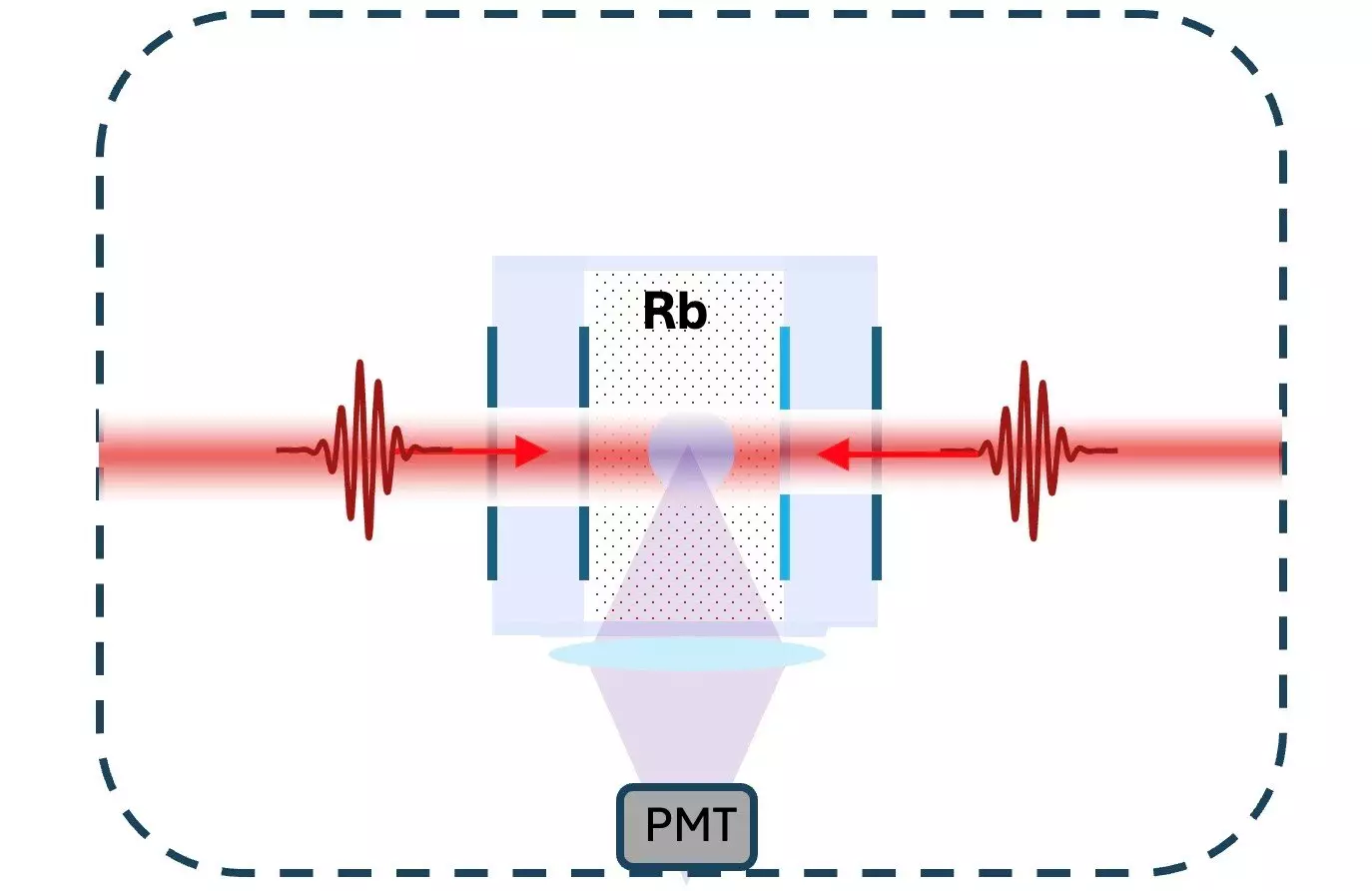In recent years, the development of atomic clocks has seen significant innovations, leading researchers to explore ways to enhance their functionality and accessibility. A pivotal breakthrough has emerged in the form of a new optical atomic clock that utilizes a singular laser, eliminating the need for extreme cooling conditions typically associated with such advanced timekeeping devices. This fresh approach not only simplifies the design of atomic clocks but also retains the accuracy and stability that are vital for various applications, from satellite technology to telecommunications.
For two decades, researchers have incrementally improved the performance of atomic clocks, yet many of these advancements remained confined within laboratory settings due to their complex structures and reliance on cryogenic temperatures. The traditional atomic clocks depended on multiple lasers and sophisticated cooling systems to mitigate the movement of atoms, ensuring optimal precision. However, the quest for innovation sought to transition these tools from the confines of research facilities into everyday use, which posed a significant challenge for designers and scientists alike.
The introduction of frequency combs—a sophisticated laser technology that produces a spectrum of evenly spaced frequencies—represents a pivotal innovation for atomic clocks and precision timekeeping. This new optical atomic clock described by researchers at the University of Arizona integrates a frequency comb to directly excite two-photon transitions in rubidium-87 atoms. This innovation enables the clock to effectively serve the same purpose as a traditional model that relies on two lasers.
By ingeniously reconfiguring the mechanism that traditionally facilitated timekeeping, researchers have demonstrated that it is possible to maintain the accuracy and reliability of atomic clocks while drastically reducing their size and complexity. The lead researcher, Jason Jones, highlighted that this simplified design is pivotal for “taking this advanced technology out of the lab” and into practical scenarios.
One of the most exhilarating possibilities stemming from this refined atomic clock design is its potential to substantially enhance the Global Positioning System (GPS). GPS technology, which fundamentally relies on precise timing through satellite-based atomic clocks, stands to gain from the improved performance and availability of these new clocks. Seth Erickson, the paper’s first author, elucidated that creating modular and accessible atomic clocks could not only augment GPS services but also transform telecommunications.
Imagine a future where individuals can experience an uptick in communication efficiency, allowing multiple users to share the same telecom channels simultaneously without compromising data rates—a possibility made attainable by the advancements in atomic clock technology.
A pivotal aspect of this new atomic clock design lies in its handling of the atomic motion that affects laser frequencies. Instead of focusing on cooling atoms to near absolute zero—an intricate process—the researchers employed a two-photon absorption method. Interestingly, by sending photons from opposite directions at the atoms, the motion effects on one set of photons counterbalance those on the other. This clever strategy allows the clock to operate efficiently with atoms at much higher temperatures, simplifying the overall clock architecture.
Furthermore, by utilizing a broad range of colors emitted from a frequency comb, the researchers eliminated the previous dependency on single-color lasers. This fundamental change not only simplifies the design but also enhances the versatility of the atomic clock, paving the way for future innovations.
While the current generation of compact optical atomic clocks exhibits impressive performance—matching that of traditional models with an instability of 1.9×10−13 at one second—the research team is fervently working on further improvements. The ongoing goal is to develop an even smaller, more stable optical atomic clock while harnessing advancements in laser technology. The potential applicability of the direct frequency comb methodology extends beyond rubidium-87, suggesting that future clocks could utilize various two-photon atomic transitions not reliant on conventional single-frequency lasers.
The advent of this new optical atomic clock signifies more than just a technological evolution; it represents a bridge between the scientific community and everyday applications. As researchers continue to refine these devices, the prospects for enhanced GPS capabilities and advanced telecommunications pave the way for transformative changes in how we perceive and manage time. This advancement not only redefines our understanding of precision timekeeping but also emphasizes the significant potential of scientific innovation to impact routine life. Through relentless experimentation and innovative design, the future of atomic clocks seems not only promising but also within reach for mainstream application.

